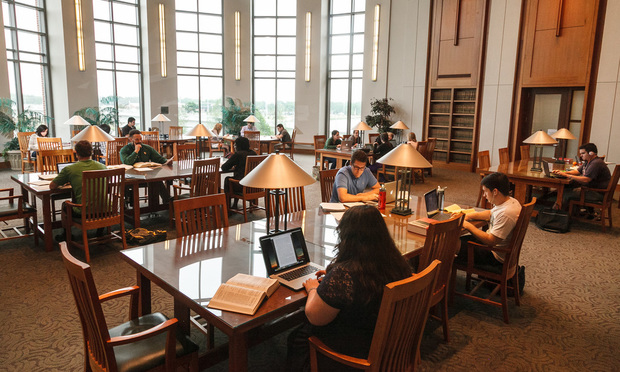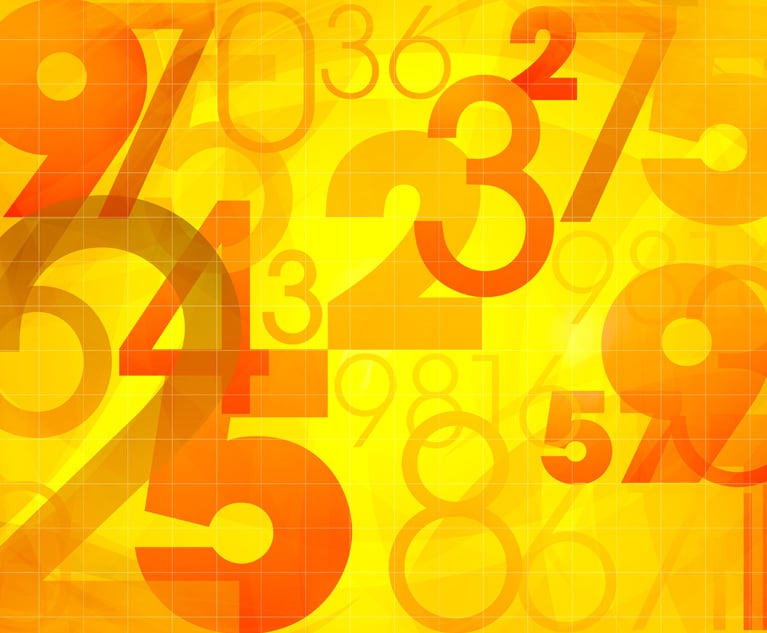Bar Pass Rate Bonanza: The 'Ultimate' Law School Rankings
Baylor University School of Law posted the highest ultimate bar pass rate—all 109 of its 2015 grads who took the bar passed over the span of two years. The University of Detroit Mercy School of Law had the lowest ultimate bar pass rate in 2015, at just under 57 percent.
March 29, 2018 at 03:02 PM
3 minute read

A wealth of bar passage data recently released by the American Bar Association provides the most comprehensive picture yet of which law schools' graduates are acing the test, and which are struggling.
The ABA this year overhauled the timing and format of how it reports schools' bar pass rates in a bid to get that information out to the public faster, and to make it easier to compare data across schools.
We're taking a deeper dive into the numbers this week. Today, we're looking at what's dubbed the “ultimate bar pass rate.” For the first time, the ABA has released the information, which is the percentage of a school's graduates who passed the bar within two years of graduation. Unlike first-time bar pass rate, the ultimate pass rate captures graduates who may have failed the exam on their initial attempt, but passed on their second or third tries. Nationwide, nearly 88 percent of 2015 grads passed the exam within two years. Baylor University School of Law posted the highest ultimate bar pass rate—all 109 of its bar takers passed in that time period. The University of Detroit Mercy School of Law had the lowest ultimate bar pass rate in 2015, at just under 57 percent. The chart below shows where each law school landed.
But not every law graduate takes the bar. The chart also shows which schools had the highest percentage of graduates who didn't take the exam within two years. One-third of 2015 graduates from Southern University Law Center didn't take the bar—the most of any school, according to the ABA data.
Finally, we break down which law schools seem to have a hard time figuring out how their graduates fared on the all-important licensing exam. We've listed the schools according to the percentage of their 2015 class for which they reported no bar pass information to the ABA. Detroit Mercy is tops in this category, with data missing for 24 percent of that class.
Check out our other stories and charts based on the ABA's recent release of bar pass data. In our first report, we looked at the first-time bar pass rates of each law school in 2017, and how they performed in comparison to state averages. Next we focused on the the first-time bar pass rates of individual jurisdictions, which vary widely. Finally, we're examining how each law school's 2015 graduates fared on the bar exam over a two-year period, as well as which school's graduates sit out the test.
Explore the charts below to see how your school fared.
This content has been archived. It is available through our partners, LexisNexis® and Bloomberg Law.
To view this content, please continue to their sites.
Not a Lexis Subscriber?
Subscribe Now
Not a Bloomberg Law Subscriber?
Subscribe Now
NOT FOR REPRINT
© 2025 ALM Global, LLC, All Rights Reserved. Request academic re-use from www.copyright.com. All other uses, submit a request to [email protected]. For more information visit Asset & Logo Licensing.
You Might Like
View All
The Week in Data Jan. 21: A Look at Legal Industry Trends by the Numbers

The Week in Data Dec. 13: A Look at Legal Industry Trends by the Numbers
Trending Stories
- 1Critical Mass With Law.com’s Amanda Bronstad: LA Judge Orders Edison to Preserve Wildfire Evidence, Is Kline & Specter Fight With Thomas Bosworth Finally Over?
- 2What Businesses Need to Know About Anticipated FTC Leadership Changes
- 3Federal Court Considers Blurry Lines Between Artist's Consultant and Business Manager
- 4US Judge Cannon Blocks DOJ From Releasing Final Report in Trump Documents Probe
- 5White & Case KOs Claims Against Voltage Inc. in Solar Companies' Trade Dispute
Featured Firms
Law Offices of Gary Martin Hays & Associates, P.C.
(470) 294-1674
Law Offices of Mark E. Salomone
(857) 444-6468
Smith & Hassler
(713) 739-1250










